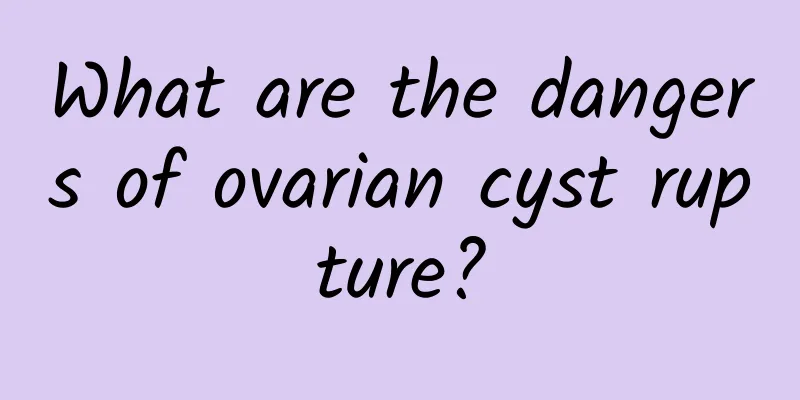What are the dangers of ovarian cyst rupture?

|
What are the dangers of ovarian cyst rupture? Is it serious? Ovarian cyst rupture in women refers to the rupture of the mature ovarian follicle or corpus luteum due to some reason, which causes bleeding. In severe cases, it can cause massive intra-abdominal bleeding, which is ovarian rupture. There are two types: follicle rupture and corpus luteum or corpus luteum cyst rupture. It can occur in both married and unmarried women, and is most common in women of childbearing age. Ovarian rupture occurs more often on the right side and is easily misdiagnosed as acute appendicitis. Acute appendicitis often presents with epigastric pain or fullness, which is gradually limited to the Malpighian point. Nausea and vomiting are more prominent, and tenderness, rebound pain, and abdominal muscle rigidity are more obvious. Bimanual examination: cervical lifting pain and uterine mobility pain are mild, while ovarian cyst rupture is completely the opposite. The symptoms of mild ovarian cyst rupture gradually ease, while acute appendicitis has symptoms and signs of internal bleeding, but not in appendicitis. 1. Acute appendicitis: Ovarian cyst rupture occurs more often on the right side and is easily misdiagnosed as acute appendicitis. Acute appendicitis often presents with epigastric pain or full abdominal pain, which is gradually limited to the Malpighian point. Nausea and vomiting are more prominent, and tenderness, rebound pain and abdominal muscle rigidity are more obvious. Bimanual examination: Cervical lifting pain and uterine mobility pain are mild, while ovarian cyst rupture is completely the opposite. The symptoms of mild ovarian cyst rupture gradually ease, while acute appendicitis has symptoms and signs of internal bleeding, but not in appendicitis. 2. Ruptured tubal pregnancy or miscarriage: Ruptured ovarian cysts are easily misdiagnosed as ruptured tubal pregnancy or miscarriage, but if you carefully inquire about the menstrual history and pay attention to the time when the lesion occurs in the menstrual cycle, you can usually still distinguish them. Tubal pregnancy often has a short-term history of amenorrhea, a small amount of vaginal bleeding, and recurrent abdominal pain. The pelvic cavity is obviously tender and a mass can be felt. Other medical conditions such as a history of infertility are different from ovarian rupture. |
<<: The best treatment for pelvic inflammatory disease
>>: Effective folk remedies for treating habitual miscarriage
Recommend
The dangers of bacterial vaginosis
We must be aware of the dangers of candidal vagin...
Several main symptoms of irregular menstruation
According to the latest medical survey, more than...
How to treat irregular menstruation?
How to treat irregular menstruation? Gynecologist...
Make good use of sugar substitutes to help lose weight. Save 100 calories a day and enjoy slimmer skin.
Many people try their best to lose weight, but to...
Does the cervix change during spontaneous abortion?
After a miscarriage, the cervix usually undergoes...
Foodies must know: 5 tips for hunting high-calorie foods at night markets
"Nai Night Market" is an activity that ...
What should I not eat if I have uterine fibroids? Is uterine fibroids okay after the age of 45?
What should I not eat if I have uterine fibroids?...
What are the diagnostic methods for cervical erosion?
Cervical erosion is a common manifestation of chr...
Clinical treatment principles of adnexitis
Adnexitis mainly includes gynecological diseases ...
What is the effect of Panax notoginseng on uterine fibroids? The benefits of Panax notoginseng on uterine fibroids
What is the effect of Panax notoginseng on uterin...
What drugs are commonly used to treat Bartholinitis?
The Bartholin's glands are located behind the...
Does third degree cervical erosion need treatment?
The third degree of cervical erosion does not req...
Treatment costs for ovulatory bleeding
How much is the cost of treating ovulation bleedi...
What items should be checked during the follow-up examination for female cervicitis? 5 items must be checked during the follow-up examination for female cervicitis
If you have cervicitis, you need to receive timel...
The most common clinical symptoms of uterine fibroids
The increasing incidence of uterine fibroids has ...









